Walker Buehler Has the Arm, Arsenal and Attitude to Be a Star

This story appears in the Aug. 12, 2019, issue of Sports Illustrated. For more great storytelling and in-depth analysis, subscribe to the magazine—and get up to 94% off the cover price. Click here for more.
A pitcher is a catapult, at root a simple machine analogous to what the ancient Greeks invented to launch arrows or stones at the enemy. Its name survives from the Greek kata, or "downward," and pallo, "to hurl." The modern translation, as it relates to five-ounce spherical payloads, is "Koufax."
In function and form, no pitcher typified the engineering marvel of propelling a baseball like Sandy Koufax. He was the human version of Da Vinci's design of the perfect catapult. Whereas Leonardo conjured a leaf spring and a rope pulled taut around a drum to accumulate power, Koufax would raise both hands over his head, lift his right knee chest high, and pull the baseball down to the crick behind his bent back leg until his shoulders tilted as if aiming for the upper deck. Only then, maximally loaded, did he unloose hell on hitters.
One night last October, baseball's Leonardo sat serenely in the second row at Dodger Stadium, between the L.A. dugout and home plate, for Game 3 of the World Series. On the same mound that Koufax had mastered half a century before stood Walker Buehler, a 24-year-old rookie preparing to throw his 108th pitch in his 177th pro inning of the year. At bat was Boston's J.D. Martinez, the Hank Aaron Award winner as the American League's best hitter, and the second-best fastball hitter in baseball. The night air tingled with tension. The Dodgers led the highest-scoring team in baseball 1-0 in a matchup they had to win, having lost the first two games.
At 6'2" and 185 pounds, and with an attempt at a mustache that resembled a thinning patch of August lawn, Buehler evoked not a weapon but a high school senior, four-year student council officer, National Honor Society member with a 4.3 weighted GPA and 30 ACT, and aspiring political science major thinking of a career in politics—all of which Buehler was six years earlier at Henry Clay High in Lexington, Ky.
But then the art and science of human engineering began. Buehler raised both hands above his head, a change he made in his delivery as a junior at Vanderbilt after he read that almost all Hall of Fame pitchers did so. For the next few beats he looked just like Justin Verlander: body tucked tight as if off a high dive, front foot under the hamstring of the raised front leg before it kicked out as the arm pulled back and the shoulders tilted, as if aiming for the mezzanine.
This is how Papa showed him how to do it. He called his maternal grandfather Papa. Dave Walker was his first pitching coach, an engineering savant from the oil business in eastern Kentucky who had a knack for unpacking the way things worked, including Verlander. Papa grew up in Alba, Mich., as a Tigers fan. If he was going to teach his grandson how to throw, then the Detroit ace was going to be the template. The boy learned Verlander well.
"Snake eyes!" Papa would call out to Walker while he was pitching. "Snake eyes!"
Papa said it so many times that to this day, Walker still hears Papa's voice. Snake eyes is the metaphor for the ideal position of the fingernails of his first two fingers in the fastball grip: "Having your fingers on top of the ball instead of out to the side," Buehler explains. "I spin the ball pretty well, not crazy but well enough, and I think that's where it came from. Him saying that forever definitely didn't hurt."
As Martinez waited, Buehler's body uncoiled with speed and power, his sinews and muscles firing like the bent wooden beams and twisted cords of gut and horsehair that powered the katapeltes thousands of years ago. Snake eyes sent the fastball spinning at 2,581 rpm—318 rpm above the MLB average—and at 98.2 mph. It was a fastball right down the middle, a pitch Martinez had missed for strike three only twice all year. This pitch—this moment—defined Buehler and what he can do with a baseball.
"Selfishly, I really like punching guys out," he says. "That's like my thing. That's what I enjoy doing. I like pitching. I like all of it.... But if I had to pick one thing I like best, I like punching guys out."
Martinez swung and missed. He dropped his head in defeat all the way back to the dugout.
Koufax blurted out, "Yeah!" and rose from his seat, applauding. Buehler gave one quick cold stare at Martinez, then threw both arms up, yelled, "Let's go!" and broke out an I-own-the-joint strut back to the dugout as if walking out of a saloon in an old Western. There, Clayton Kershaw, heir to Koufax in the panoply of great Dodgers power pitchers, threw his arms around his own heir.
This was the last pitch of 2018 for Buehler and the first pitch of the rest of his career. He struck out seven Red Sox over seven innings. He allowed two hits and no walks. There have been 1,330 starts in World Series history. Only twice did a pitcher allow no more than two base runners, with no walks and at least seven strikeouts. The other was Don Larsen in his 1956 perfect game.
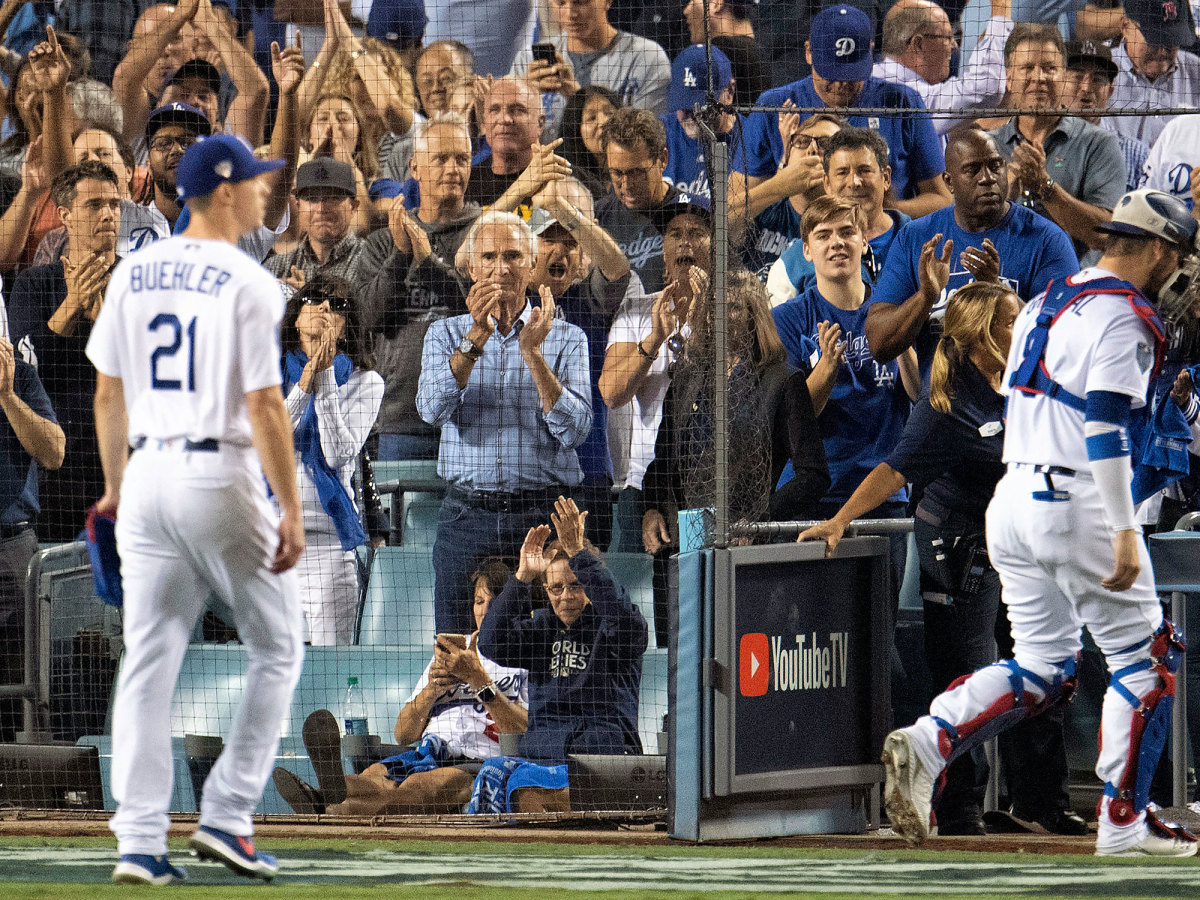
After Buehler's 2018 workload, the Dodgers ramped him up slowly in spring training, a conservative approach that contributed to his 5.22 ERA through the end of April. But as he regained full arm strength, Buehler has established himself as a master craftsman with a historic combination of power and command.
"I'm just now starting to feel good and get dialed in," Buehler said last month. "One of the biggest keys I pay attention to is throwing first-pitch strikes. When you do that, you control the count and you pitch deep into games. That's what I want to do every time."
Only 10 pitchers have struck out 11 or more batters without a walk four times in the same season. Buehler and Koufax are the only Dodgers pitchers to do so. Buehler accomplished it in a span of just 10 starts, capped by a stunning 15-K complete-game win over San Diego on Aug. 3. He threw only 30 balls to 31 batters—Maddux-like precision for someone who hit 99 mph.
"It's hard to imagine having more command than he did," Los Angeles manager Dave Roberts said. "He was as dominant as you can be."
Today among starting pitchers no one throws the ball harder with as much spin as can Buehler. But Buehler is a rare power-pitching polyglot who features six pitches, including three versions of fastballs. There is no one like him. And he knows it.
"He has a burning desire to be great," says Dodgers president Andrew Friedman, "in large part to back up the amount of trash he talks."
Buehler, for instance, when asked if he is the strongest player, pound-for-pound, on the Dodgers, replied, "Yeah, I would say so. I think there are probably guys who are naturally stronger than me, but during the season I don't think many people lift the way I do. So throwing a hundred at inning 180-ish, that's where the confidence comes in."
"I was here two days and he called me a piece of [trash]," veteran first baseman David Freese said. "I was like, ‘Whoa.' But he can pull it off because he's so likable and because he can back it up. Everybody loves him here. He's just a good dude with an amazing arm. He's going to win a Cy Young or four."
Power and command are the yin and yang of pitching. Pitchers constantly rebalance this duality to find the right harmony in a game of give and take with their stuff. But Buehler is the rare pitcher who need not compromise. He maxes out both.
He has what scouts call "pitchability," the genius to know how to shape and use six pitches, all of which he can tweak at a moment's notice. This craftsmanship earned him comparisons with Zack Greinke when he was drafted in 2015.
But Greinke has never averaged 96.9 mph on his fastball, as Buehler is doing this season. The pitch slices through the air with such ferocious speed and spin that batters hit .196 against it the past two years. Only Houston's Gerrit Cole has a heater that's been harder to hit. "Hands down the best stuff I've ever seen," says veteran catcher Josh Thole, who caught Buehler while with the Dodgers in spring training—a time when catchers traditionally work on framing pitches. "With him? Forget it. You're working on just stopping the baseball."
The Dodgers never saw this coming. Where they thought they might be getting another Greinke, they have a combination of Greinke and Aroldis Chapman.
Baseball America didn't see this coming, writing of Buehler just after he was drafted: "He throws his fastball in the low-to-mid 90s, though it doesn't have a ton of life."
Twenty-three teams, the ones that passed on him, didn't see this coming.
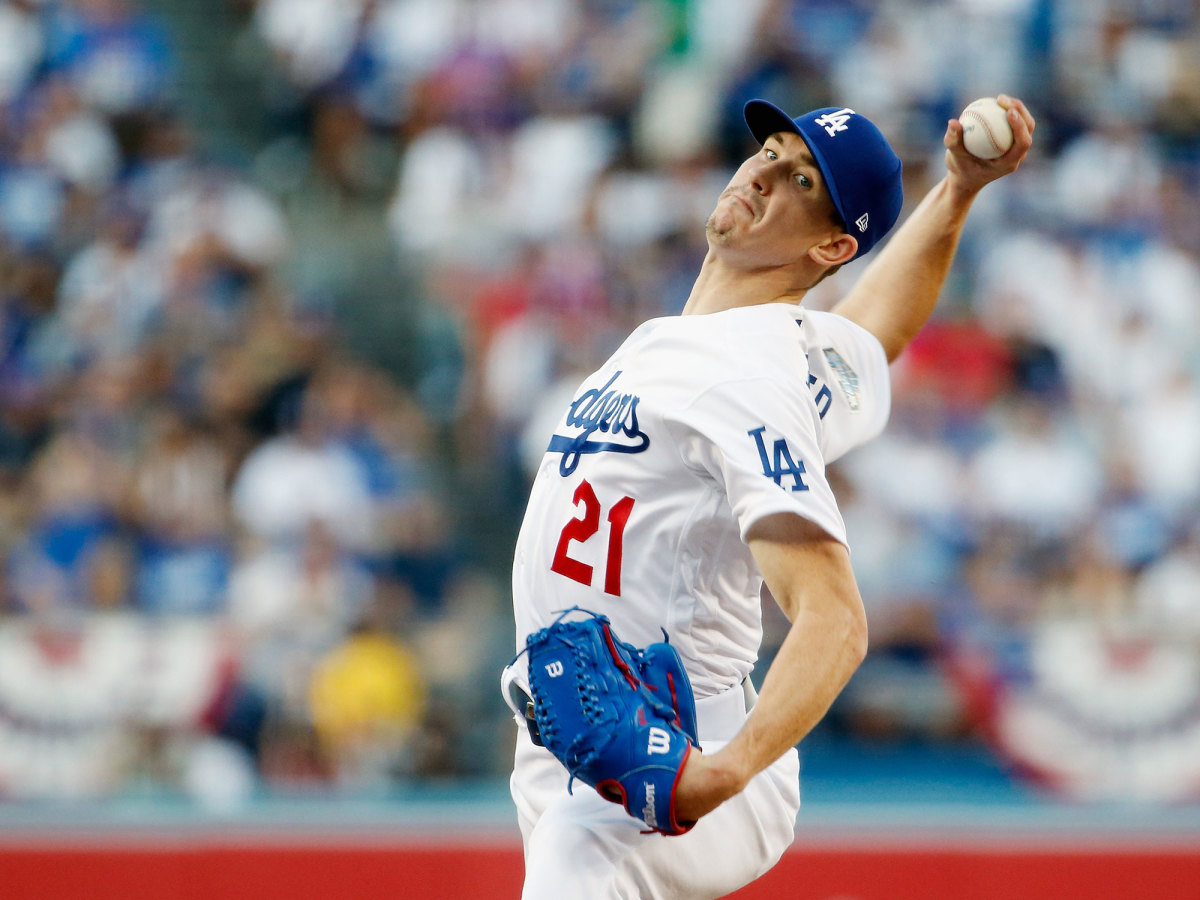
His own father didn't see this coming, certainly not back when Walker entered Vanderbilt at 145 pounds and would call home ready to quit because of the grind. "I don't know how he does it," says Tony Buehler, a commercial banker in Denver. "Not a day goes by when I'm not ... I walk into my office and I've got his jersey from his first major league win on the wall. I'll stand there and look at it and...."
Tony's voice begins to break. Then he starts to sob.
"And I'll start crying. Like I am now. It's unbelievable."
Both Walker and Tony know the exact moment when defying his size and expectations became possible: June 4, 2012.
"I'll never forget that night," Tony says. "It was probably the lowest moment he ever felt. Baseball-wise, it certainly was."
Says Walker, "I don't think I'd be here without it."
Buehler was a high school sophomore when Tony began to think his son might have exceptional pitching ability. Walker had fallen into pitching because, he says, "I was too small. I had no power" as a hitter. During spring break of his sophomore season, Tony watched his son pitch in Cary, N.C. Walker threw hard, around 85 mph. That led to an invitation from a travel team. "Then it just started to build," says Tony. "His junior year we started seeing scouts."
The biggest knock on Buehler was that he was so scrawny. Also, there was the matter of his commitment to Vanderbilt. But as Buehler worked his way up draft boards, he grew more excited about the idea of signing to play pro ball. At least two teams had told him he'd be picked before the end of the supplemental round—the compensation picks after the first round but before the second. The Padres, who had been scouting him hard, held three supplemental picks. Buehler was fairly certain he would sign if San Diego took him with one of them, which could mean a bonus of as much as $2 million.
On the night of the draft, June 4, 2012, his mom, Karen—she and Tony divorced when Walker was three—invited about 75 people to her house. "I just wanted to have buddies over," Buehler said. "My mom invited what felt like the whole town."
With their first supplemental pick the Padres picked Zach Eflin, a high school pitcher from Florida who stood 6'6", the kind of big body the pro teams prefer in pitchers. With their second pick they took Travis Jankowski, an outfielder from Stony Brook University. The Padres had one more supplemental pick, the 24th of the round.
Everybody in Karen's house thought, This is it. Here it comes. The crowd around the television quieted down as the announcement was about to be made.
"The San Diego Padres select righthanded pitcher Walker ..."
The house erupted with shouts and cheers. It was hard to hear a thing, but those who could barely heard the man finish the name.
"... Weickel."
The Padres had taken another 6'6" Florida high schooler.
"The whole house went nuts at first and then got really angry in about two seconds," Buehler says.
The Padres had swooned over Weickel the previous summer when he pitched in a game and touched 95 mph in their ballpark, Petco Park. They gave him $2 million to sign.
Only five more picks remained in the supplemental round, the last picks of the night. Two of those were used on high school pitchers. Neither was Buehler. "Walker was devastated," Tony says. "When you're projected to be a first-round supplemental pick and you don't get drafted [then], you have to deal with that.
"I would say he was embarrassed in front of 75 people in my ex-wife's house. I'll never forget trying to console him. It was painful."
Suddenly Walker grabbed his phone and walked outside. He dialed Tim Corbin, the baseball coach at Vanderbilt.
"Coach?" he told him. "I'm coming."
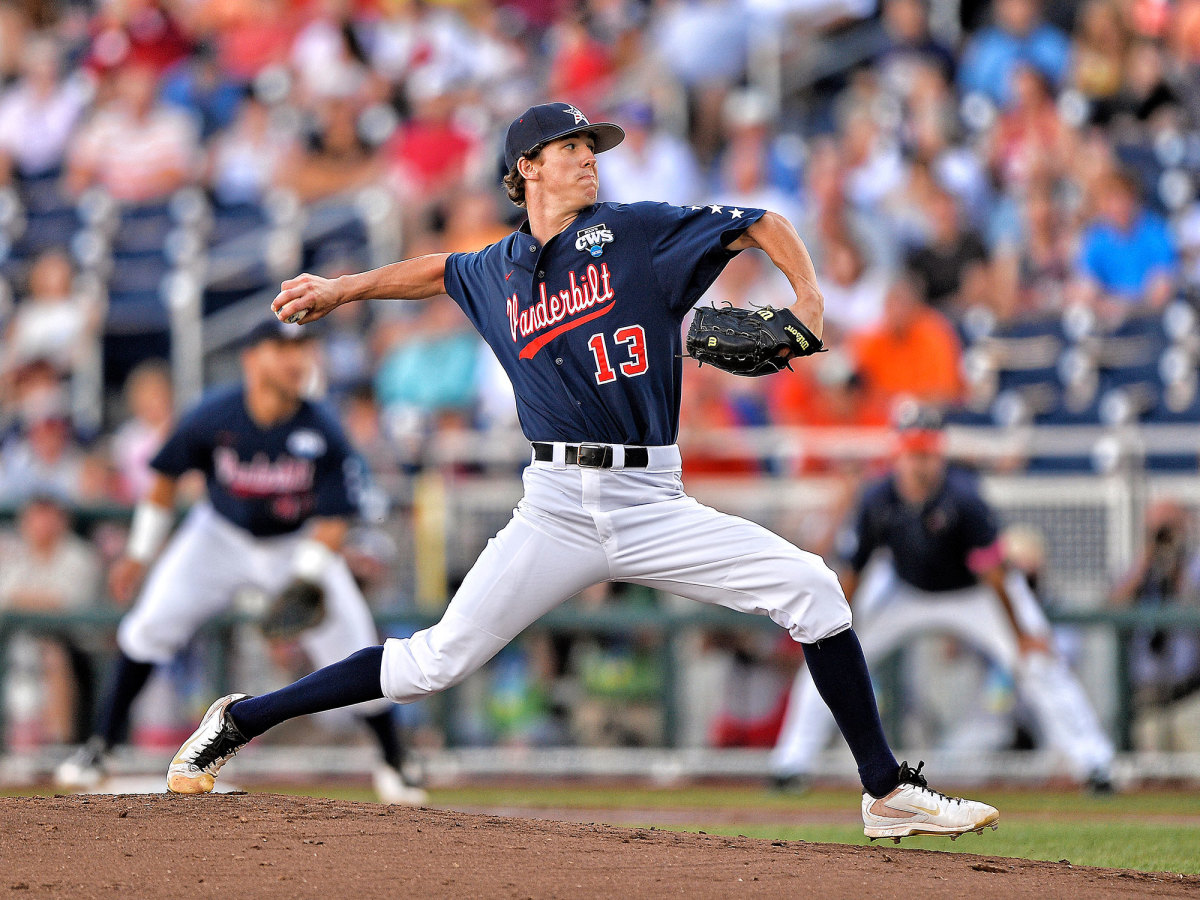
"That," Tony says, "is Walker. He reaffirmed his commitment to Vandy. At his lowest moment he made the commitment to turn the page."
The next day, Buehler slid into the 14th round due to signability concerns before the Pirates finally picked him. Pittsburgh had used the eighth overall pick on Stanford pitcher Mark Appel, and Buehler became a contingency plan in case Appel turned down its offer. As the Pirates began to realize that Appel would not sign, they offered Buehler $1 million. Buehler wanted no part of it.
"It ended up being for the best," Buehler says. "Vanderbilt was a great place, and a great place for me to develop and grow and learn more about pitching and my body. I don't think I'd be here if I hadn't gone to college.
"I just don't think I would be the guy who lifts the way I do now, and I don't think I ever would have thrown with the velocity I do now if I had not learned how to be pushed and lift and really work. I wasn't a big worker in high school. But [at Vanderbilt] there's not too many people who don't work."
Major league teams drafted 15 high school pitchers in the first and supplemental rounds of the 2012 draft. Eight of them have never pitched in the big leagues, including Weickel. Last season, at age 24, while Buehler was pitching the Dodgers to the National League pennant, Weickel spent most of the year pitching for the Down East Wood Ducks, a Class A affiliate of the Texas Rangers.
All the energy that builds in the accumulator of a catapult needs to be dispersed, and for the pitcher the first place it disperses is into the ground. The uncoiling of the energy in Buehler's delivery begins when he sticks his left foot in the dirt. It must land not in line with his back foot, but a smidge to the third base side, in what pitchers call the one o'clock foot position.
The only way a pitcher can land like this and still maintain stability while the hips and torso spin violently enough to chuck a baseball 100 mph is if he has superior strength in the legs and buttocks. Buehler is a weight-room fanatic who loves training with heavy weights. Last year, while training in season, he set a personal best by squatting 450 pounds.
"It's amazing how much weight he throws around," says teammate Kiké Hernández, "especially when it looks like he's going to break in half. The guy is built like the barbell."
Buehler bulked up his lower body out of necessity. As a sophomore in 2014 he logged 121 2/3 innings for Vanderbilt (en route to its first College World Series title), the U.S. national collegiate team and the Cape Cod League champion Yarmouth-Dennis Red Sox. The next spring, as a consequence of overuse and his pursuit of velocity, he missed the first two weeks of Vanderbilt's season with elbow soreness. By the end of his junior season he had fallen to No. 3 in the Commodores' rotation, and his mid-90s fastball had lost its life. "I knew something was off," he said, referring to his elbow. "My last start before the draft I was like 86-90. That sucked."
In the 2015 draft 23 teams passed on the still rather scrawny kid—he was up to 170 pounds—with the decreased velocity. The 24th pick belonged to the Dodgers, who had rated him as the fifth-best player when the season began and still had him ninth on their board.
"We knew something wasn't right," Friedman says now of Buehler's elbow. "We didn't know the extent of it. There's no question he never gets to us if he didn't have a year like that. A lot of it was just hoping that he would get to us."
In the Dodgers' draft room was Josh Byrnes, who had been hired by the club after the previous season as senior vice president of baseball operations after being fired by the Padres as their GM. Club officials debated briefly whether to take Buehler or Ke'Bryan Hayes, a high school infielder who would go eight picks later to Pittsburgh.
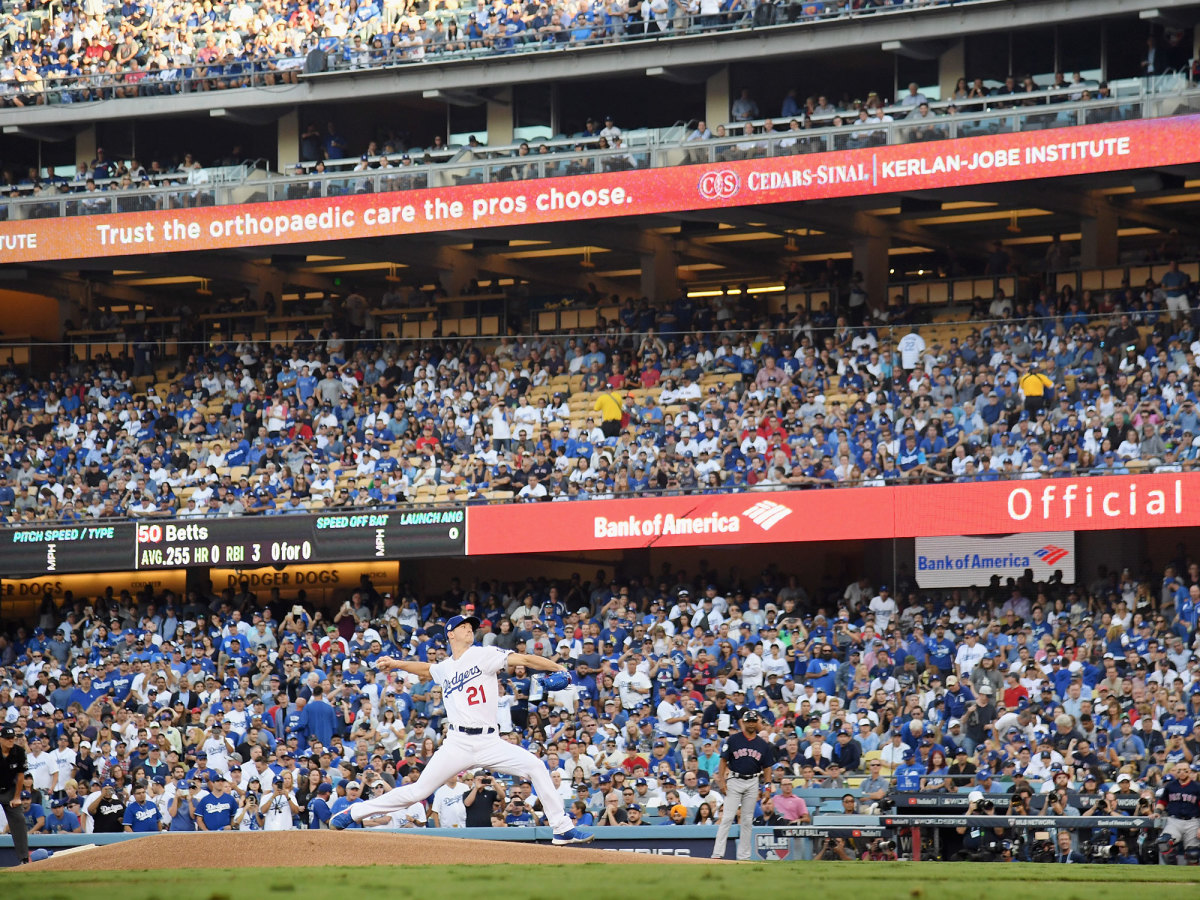
"That was a fairly low debate," says Byrnes, who passed on Buehler in San Diego. "We felt if Buehler got to our pick, that would be the one.
"We generally felt we were getting a top five, top 10 talent who fell because of his junior year. The pitcher he is now? I don't think we predicted that. It's a pleasant surprise."
The Dodgers signed Buehler to a bonus of $1.78 million, $314,400 less than the slot amount. Before he threw a pro pitch, Buehler underwent Tommy John surgery to repair the damaged ligament in his elbow. He was out 12 months. Buehler calls it "my gap year," and after getting bypassed by the Padres as a high school senior, it was the next-best thing to happen to him.
Buehler dived even more into strength training, adding 15 pounds during his rehabilitation. "It was captivating to see Walk's intensity and pure strength under the bar in a squat rack," says Phillies manager Gabe Kapler, the Dodgers' director of player development from 2015 to '17. "He shared about his training at Vandy, but it was still kind of shocking to see him get after it, squatting heavy, then able to discuss the whys of training.
"This wasn't a young minor league player blindly following what our strength and conditioning coaches set up for him. This was an intelligent athlete following his own intuition."
With the introduction of Statcast pitch measurements in 2015, Buehler also used his downtime to learn more about ball flight and pitch efficiency. By the time he came back, Buehler was throwing the ball harder than ever—so hard that his trainers would tell him to scale it back. "There was a good month where they had a guy with a radar gun yelling out certain velocities so I didn't go above [them]," he says.
Buehler made his pro debut on July 7, 2016, for the Great Lakes Loons, the Dodgers low-A-ball affiliate. It was 337 days after his surgery. His second of three appearances in 2016—all scoreless—came for the Arizona League Dodgers five weeks later. He hit 98 mph.
Last season, in his third career start, Buehler threw the first six innings of a combined no-hitter against the Padres. And then he got better.
When he wasn't sharp following a three-week absence with a broken rib, he sat down with pitching coach Rick Honeycutt to watch video of all of his strikeouts. He figured out the difference: From three weeks of only playing catch he had developed a bad habit of separating his hands too high. After he returned to separating them lower, he had a 2.09 ERA over his last 16 starts.
He also developed a cut fastball on the fly and added a second variety of curveball. Since his surgery Buehler had thrown his curve with a "spiked" grip (with the nail of the index finger dug into the baseball), but when he experimented with a traditional grip he found that it spun 200 rpm faster. Likewise, his slider shifts based on where he places his fingers. "I change that all the time," he says. "As you go through a year, your arm is going to move a tick different here and there."
Nothing better defines Buehler's combination of skill and savvy than the sleight of hand he creates with his fastball. As batters look to hit more fly balls, many pitchers counter by throwing fastballs higher in the zone, so that hitters can't square them up. But by watching hitters' reactions and by checking data from pitch-tracking devices, Buehler discovered that his fastball is even more effective when he throws it low. It's because of a phenomenon he calls "perceived rise." Buehler's fastball spins so much that when the hitter thinks it's falling out of the strike zone, it holds its plane. The ball doesn't actually rise, but it appears to the hitter to do so.
Buehler threw his fastball 173 times in the bottom third of the strike zone last year; 106 of them were taken for a strike. Only seven times did someone get a hit off it. "It's more fun pitching with velocity," he says. "You get away with more. I think that's why it's such an evolution in the game.
"That's what gets you to the big leagues now. You're going to get recruited based on velocity, so how can you blame anyone for chasing it? Now, does that stink for a guy that's 86 to 88 and can really command it? Yeah, it does stink. It's just the reality of it."
Buehler throws every fastball as hard as he can, even in his bullpen sessions. "If I don't think I can throw the ball hard and throw it well that day in the bullpen, I don't throw it," he says. "I want to practice what I'm going to do in a game."
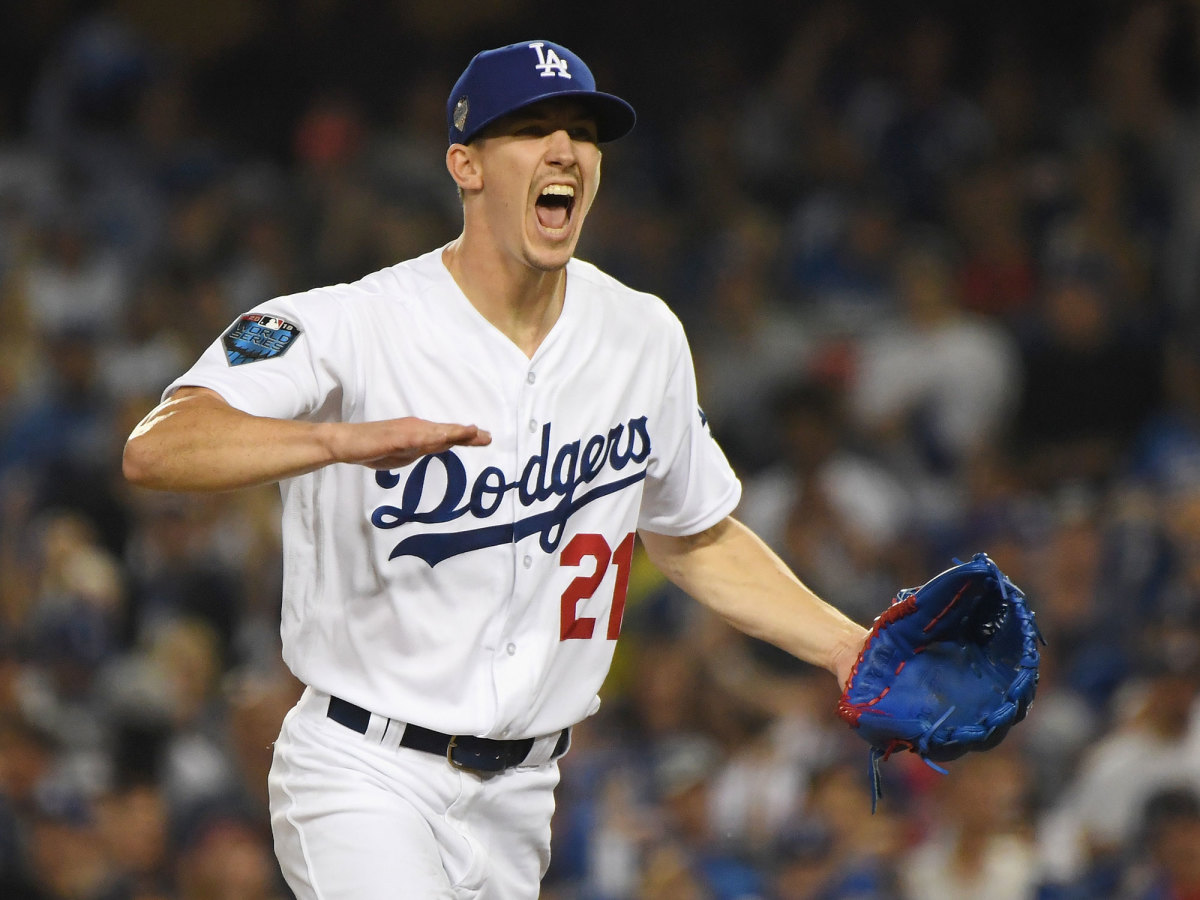
It is striking, knowing how hard he can throw a baseball, to see how narrow Buehler is. He is a long braided cord of sinews and fascia, as tightly woven as the rope of a catapult. Says Hill, "We can take all the information we want, but when it comes down to it, you're a boxer in the ring. You need to love to compete. And that's what I love about watching him pitch. That's the x-factor. And he has that."
Before the season Buehler had hoped for an elite first-pitch-strike percentage, a sub-3.00 ERA, a strikeout per inning pitched, 200 innings and, if luck is with him, 20 wins. He won't win 20, but the rest of the marks are attainable. Only two Dodgers ever posted a season like that: Koufax in 1965 and Clayton Kershaw in 2011. For one pitch on one night last October, the three of them were connected. "Of all my moments as a Dodger," Byrnes says, "him walking off the mound in the World Series and Sandy Koufax standing and applauding him is my favorite. That one picture is unforgettable."
In September 2016, Byrnes traveled to Midland, Mich., to watch the Loons play in the Midwest League playoffs. When Buehler saw the former Padres GM who had passed him over, he had a question.
"Did I ever tell you my story about the 2012 draft?"
"No, what's that?"
Then Buehler told Byrnes all about the draft party, the house full of people and Walker Weickel.
"I felt awful," Byrnes says.
Buehler told him it was O.K., that the Padres' not picking him turned out to be the best thing to happen to him.
Embedded in every freakish fastball Buehler throws is a lesson. Its greatest power comes not from how fast it flies, how wickedly it spins or where it is going, but in what is behind it.
